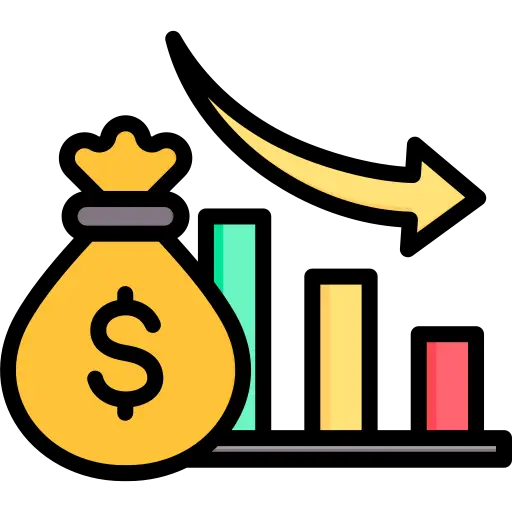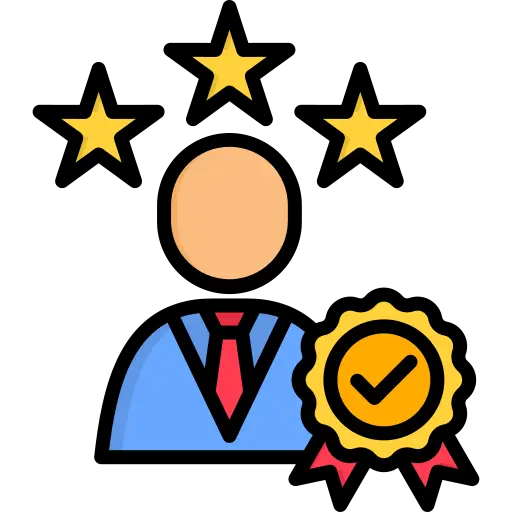Verified Insights
Precision-driven research you can trust. We uphold rigorous data validation processes to ensure every report is reliable and based on credible sources.
+91 9425150513 (Asia) support@24lifesciences.com
MARKET INSIGHTS
Global medical disinfectant gel market size was valued at USD 2.84 billion in 2024. The market is projected to grow from USD 2.98 billion in 2025 to USD 4.17 billion by 2032, exhibiting a CAGR of 4.9% during the forecast period.
Medical disinfectant gels are antiseptic solutions primarily containing alcohol (ethanol or isopropanol), quaternary ammonium compounds, or chlorhexidine gluconate. These formulations are designed for hand hygiene and surface disinfection in healthcare settings, killing pathogens through chemical action while maintaining skin compatibility. The most common variants include alcohol-based gels (containing 60-95% alcohol), which dominate hospital applications due to their broad-spectrum efficacy against bacteria, viruses, and fungi.
The market growth is driven by stringent infection control protocols, heightened awareness of hospital-acquired infections (HAIs), and ongoing pandemic preparedness initiatives. With HAIs affecting 7% of hospitalized patients in developed nations according to recent studies, healthcare facilities are prioritizing advanced disinfection solutions. The COVID-19 pandemic accelerated adoption significantly, creating sustained demand even in post-pandemic scenarios. Leading manufacturers like 3M and P&G continue innovating with moisturizing additives and faster-acting formulations to address healthcare worker concerns about frequent use.
Pandemic-Driven Hygiene Awareness Continues to Fuel Market Growth
The global medical disinfectant gel market continues to benefit from sustained hygiene consciousness following the COVID-19 pandemic. While initial panic buying has subsided, behavioral changes have become ingrained, with healthcare facilities maintaining strict infection control protocols. Hospitals now account for over 45% of total disinfectant gel consumption, reflecting their critical role in preventing healthcare-associated infections (HAIs) that affect approximately 7% of hospitalized patients globally. The transition from temporary precaution to permanent protocol demonstrates the market's maturation beyond a crisis response.
Regulatory Mandates for Hospital Infection Control Accelerate Adoption
Stringent regulatory requirements for healthcare facility accreditation are driving systematic adoption of medical disinfectant gels. Infection prevention standards now mandate alcohol-based hand rub availability at all patient care points, creating consistent demand. Recent updates to international guidelines recommend higher alcohol concentrations (70-90%) for surgical applications, prompting product reformulations. These standards have become particularly impactful in emerging markets where healthcare infrastructure development coincides with rising quality expectations.
Technological Advancements in Formulations Create New Application Segments
Innovation in gel formulations addresses longstanding user concerns while expanding market potential. Next-generation products now incorporate skin-conditioning agents that reduce dermatitis cases among frequent users by up to 60% compared to traditional formulas. Antimicrobial persistence technologies enable extended protection durations, making disinfectant gels viable for industrial cleanroom applications. The development of fragrance-free variants has opened opportunities in sensitive environments like neonatal ICUs and food processing facilities where odor contamination was previously a barrier.
Raw Material Price Volatility Squeezes Manufacturer Margins
The medical disinfectant gel market faces significant cost pressures from fluctuating prices of key ingredients. Isopropyl alcohol prices have shown 25-30% annual volatility in recent years due to petroleum market dynamics and production capacity constraints. This unpredictability complicates long-term pricing strategies, particularly for contract manufacturers serving price-sensitive markets. Many smaller producers lack the scale to hedge effectively against these fluctuations, potentially leading to market consolidation.
Misuse Concerns and Antimicrobial Resistance Dampen Growth Potential
Emerging research on inappropriate disinfectant use presents a growing challenge for market expansion. Studies indicate that nearly 40% of healthcare workers don't achieve sufficient product volume or contact time for optimal efficacy. Furthermore, the overuse of alcohol-based formulations in community settings may contribute to microbial adaptation, with some pathogens developing reduced susceptibility. These findings have prompted calls for more targeted usage guidelines that could limit market growth in non-essential applications.
Environmental Regulations Restrict Certain Formulations
Increasing environmental scrutiny affects product development pathways in the disinfectant gel sector. Quaternary ammonium compounds (quats), used in many non-alcohol formulations, face usage restrictions in several European countries due to aquatic toxicity concerns. The industry must balance efficacy requirements with evolving regulatory standards, often requiring costly reformulation efforts. Additionally, single-use plastic packaging accounts for approximately 70% of the product's environmental impact, driving demand for sustainable alternatives that currently carry significant cost premiums.
Emerging Markets Present Untapped Growth Potential
Developing healthcare systems in Asia and Africa offer substantial expansion opportunities for medical disinfectant gel manufacturers. Government-led initiatives to improve hospital infection control, coupled with rising medical tourism standards, are driving adoption. The Asia-Pacific region is projected to grow at 6.8% CAGR through 2030, nearly double the global average. Localized product development addressing climate-specific challenges (such as high-temperature stability) and cultural preferences (like herbal-infused variants) can provide competitive advantages in these markets.
Integration of Smart Dispensing Technologies Creates Value-Added Solutions
The convergence of infection control and digital health technologies opens new revenue streams. Smart dispensers with usage monitoring capabilities now enable facilities to track compliance rates in real-time while optimizing replenishment cycles. These systems typically increase hand hygiene adherence by 50-75% in clinical trials. The data generated supports accreditation processes and helps identify training needs, creating opportunities for bundled service offerings beyond simple product sales.
Expansion into Non-Healthcare Verticals Diversifies Revenue Streams
While healthcare remains the core market, adjacent industries are adopting medical-grade disinfectant protocols. The food processing sector's move toward higher hygiene standards has created demand for NSF-certified formulations. Similarly, educational institutions are implementing disinfectant stations as part of broader public health initiatives. These applications often require customized formulations with different scent profiles or packaging sizes, allowing manufacturers to command premium pricing for specialized solutions.
Counterfeit Products Undermine Brand Reputation and Safety
The medical disinfectant gel market contends with a growing counterfeit problem, particularly in online marketplaces. Substandard products often contain insufficient active ingredients or undeclared additives, with testing revealing that up to 15% of samples fail potency specifications. These products not only pose health risks but also erode consumer confidence in legitimate brands. Manufacturers are investing in advanced packaging authentication features, but these measures increase production costs by 8-12%.
Workforce Shortages Impact Healthcare Compliance Rates
Staffing challenges in healthcare systems worldwide negatively affect proper disinfectant gel utilization. Overworked personnel frequently skip hand hygiene steps during peak periods, with compliance rates dropping below 30% in high-acuity units. This operational reality contradicts infection control ideals, creating a disconnect between product availability and actual usage patterns. Manufacturers must develop more intuitive application methods and workplace integration strategies to overcome these behavioral barriers.
Greenwashing Accusations Threaten Sustainability Claims
As environmental concerns influence purchasing decisions, manufacturers face scrutiny over legitimate sustainability improvements. Many "eco-friendly" claims focus solely on packaging while ignoring the carbon footprint of alcohol production. Life cycle analyses reveal that transportation accounts for less than 15% of total emissions, suggesting formulation innovations may offer greater environmental benefits than packaging changes. Navigating these complexities without misleading claims requires substantial R&D investment and third-party verification.
The global medical disinfectant gel market has experienced sustained demand growth even as pandemic restrictions ease, driven by lasting changes in hygiene awareness among consumers and healthcare professionals. Infection control protocols now permanently incorporate hand sanitization as a frontline defense against healthcare-associated infections (HAIs), with hospitals reporting approximately 30% higher baseline usage of disinfectant gels compared to pre-pandemic levels. While the initial surge in demand has stabilized, the market continues expanding at a steady 4.9% CAGR, projected to reach $4.17 billion by 2032. This reflects deeper institutional adoption rather than temporary consumer stockpiling, with healthcare facilities implementing automated dispensers and touch-free systems that maintain consistent usage patterns.
Formulation Innovation
Manufacturers are responding to skin sensitivity concerns through moisturizing formulations that combine 70% alcohol efficacy with dermatological benefits. Recent clinical studies indicate healthcare workers experience 40% fewer cases of contact dermatitis when using advanced alcohol-free quaternary ammonium compounds. The emergence of persistent antimicrobial gels - providing 4-6 hour protection after application - represents another innovation frontier, particularly valuable in surgical and intensive care settings where frequent reapplication is impractical.
Stringent regulatory frameworks are driving R&D investments toward eco-friendly disinfectants and safer chemical alternatives. The FDA's 2023 monograph on antiseptics has accelerated reformulation efforts, particularly regarding residual active ingredients and environmental impact. This has led to increased demand for chlorine-based and hydrogen peroxide gel variants in regions with tighter regulations, while alcohol-based products maintain dominance in emerging markets. Meanwhile, ISO certification requirements for healthcare-grade disinfectants have created opportunities for premium product lines with verified efficacy against multi-drug resistant organisms.
The global push for universal health coverage and hospital capacity building fuels steady market growth across developing regions. Governments allocating 6-8% of GDP to healthcare infrastructure create sustained demand for medical-grade sanitizing products. In parallel, outpatient clinics and ambulatory surgical centers - growing at 5.2% annually - are adopting hospital-grade infection control standards, including WHO-recommended alcohol-based handrub protocols at point-of-care locations.
Expanded Hygiene Demand Drives Strategic Expansion in Disinfectant Gel Market
The global medical disinfectant gel market features a dynamic competitive landscape with both multinational corporations and specialized manufacturers vying for market share. Growth in this sector is being fueled by persistent infection control requirements across healthcare facilities worldwide, with the market projected to grow from $2.84 billion in 2024 to $4.17 billion by 2032 at a 4.9% CAGR.
3M Healthcare maintains leadership in the alcohol-based gel segment through its comprehensive portfolio of surgical and clinical disinfectants. The company's extensive distribution network and branding as a trusted infection prevention provider have secured its position in over 85% of U.S. hospitals. Meanwhile, Reckitt Benckiser (Dettol) has aggressively expanded its institutional sales channels beyond retail, capturing significant market share in emerging Asian markets through localized production and pricing strategies.
Several mid-sized manufacturers are demonstrating strong regional growth through specialized product development. Gojo Industries (Purell) continues dominating North American healthcare facilities with patented formulas, while Schülke & Mayr has strengthened its position in European hospitals through advanced quaternary ammonium formulations. Over the past two years, both companies have invested heavily in production capacity expansions to meet surging post-pandemic demand.
The market also sees increasing competition from Asian manufacturers like Lion Corporation and MidoPharm, who are capitalizing on cost advantages to supply price-sensitive markets. These players are gradually moving up the value chain by obtaining international certifications and developing hospital-grade formulations. Meanwhile, merger activity remains active as larger firms aim to consolidate regional markets - evidenced by Ecolab's recent acquisition of specialty disinfectant producers in Latin America and Southeast Asia.
Looking forward, innovation in sustained-release formulations and eco-friendly disinfectants is becoming a key competitive differentiator. Major players are allocating over 15% of revenues to R&D for next-generation products, while simultaneously pursuing strategic acquisitions to fill technology gaps. The competitive intensity is expected to increase as healthcare providers demand more advanced solutions that combine efficacy with staff safety and environmental considerations.
Alcohol-Based Segment Dominates Due to Its High Efficacy Against Pathogens
The market is segmented based on type into:
Hospitals Segment Leads Due to Stringent Infection Control Requirements
The market is segmented based on application into:
Healthcare Providers Account for Largest Share Due to Regulatory Compliance Needs
The market is segmented based on end user into:
North America
North America dominates the medical disinfectant gel market, accounting for over 35% of global revenue, driven by stringent healthcare regulations and high hygiene standards. The U.S. FDA's stringent approval process for antimicrobial products and post-pandemic infection control mandates in healthcare facilities continue to fuel demand. Major hospital chains are adopting advanced alcohol-based formulations with added moisturizers to prevent skin irritation among healthcare workers. While the market shows maturity, innovation in long-lasting efficacy (up to 6-hour protection claims) and organic formulations present new growth avenues. The region benefits from strong distribution networks of key players like 3M and P&G, though price sensitivity in outpatient settings remains a challenge.
Europe
Europe's market is characterized by strict biocide regulations under the EU BPR (Biocidal Products Regulation), which has accelerated R&D in alternative active ingredients like benzalkonium chloride. Germany and France collectively represent 45% of regional consumption, with hospitals prioritizing WHO-compliant products containing 70-80% alcohol. A notable trend is the integration of disinfectant gel dispensers with IoT monitoring systems in Nordic countries to track usage patterns. However, competition from private label brands in the retail segment has pressured margins. The recent amendment to EN 1500:2013 standard for hygienic hand disinfection has compelled manufacturers to reformulate products, creating temporary supply chain disruptions.
Asia-Pacific
As the fastest-growing regional market (projected 6.2% CAGR through 2032), Asia-Pacific benefits from expanding healthcare infrastructure and rising nosocomial infection awareness. China's 'Healthy China 2030' initiative has allocated $850 million for hospital infection control, while India's FSSAI now mandates disinfectant availability in all healthcare facilities. Japan leads in technological adoption with touch-free dispenser installations across 72% of hospitals. The market shows bifurcation - premium international brands dominate urban private hospitals, while local manufacturers cater to cost-sensitive rural clinics with quaternary ammonium formulations. Southeast Asia presents untapped potential, though inconsistent regulatory frameworks across ASEAN nations create market fragmentation.
South America
The region exhibits moderate growth, constrained by economic volatility but supported by increasing healthcare expenditure (Brazil's SUS program expanded budget by 12% in 2023). Alcohol-based gels hold 68% market share, though frequent raw material import restrictions have led to intermittent shortages. Argentina's ANMAT has introduced new efficacy testing protocols, raising barriers for smaller players. A key trend is the growing adoption in dental clinics and beauty salons, which now contribute 22% of regional sales. However, price wars among domestic manufacturers and counterfeit products in the informal market (estimated at 15-20% of total volume) continue to challenge market development.
Middle East & Africa
This emerging market is propelled by hospital construction projects (notably in UAE and Saudi Arabia's Vision 2030 healthcare cities) and rising medical tourism. GCC countries show preference for imported premium brands with Arabic labeling, while generic products dominate African markets. South Africa's stringent product registration process has limited market entry, creating opportunities for local contract manufacturers. Religious considerations drive demand for alcohol-free variants in certain markets, though efficacy concerns persist. The region faces distribution challenges in conflict-affected areas, with humanitarian organizations becoming key purchasers. Investment in local production facilities is gradually reducing import dependency, with Egypt emerging as a regional manufacturing hub.
This market research report offers a holistic overview of global and regional markets for the forecast period 2025–2032. It presents accurate and actionable insights based on a blend of primary and secondary research.
✅ Market Overview
✅ Segmentation Analysis
✅ Regional Insights
✅ Competitive Landscape
✅ Technology & Innovation
✅ Market Dynamics
✅ Opportunities & Recommendations
✅ Stakeholder Insights
This report is designed to support strategic decision-making for a wide range of stakeholders, including:
-> Global medical disinfectant gel market size was valued at USD 2.84 billion in 2024. The market is projected to grow from USD 2.98 billion in 2025 to USD 4.17 billion by 2032, exhibiting a CAGR of 4.9% during the forecast period.
-> Key players include 3M, Unilever, P&G, Lion, Hospitex International, Turkuaz Medikal Kozmetik, and Vhern, among others.
-> Key growth drivers include rising healthcare-associated infections, increasing surgical procedures, stringent hygiene regulations, and growing awareness about hospital-acquired infections.
-> North America holds the largest market share, while Asia-Pacific is expected to witness the fastest growth during the forecast period.
-> Emerging trends include development of alcohol-free formulations, eco-friendly disinfectants, and innovations in packaging for better usability.
Our Clients
“The data provided by 24LifeScience was clear, well-organized, and useful for internal strategy planning. It helped us understand the competitive landscape more effectively.”
“We used one of their market overview reports for early-stage feasibility work. It gave us a helpful snapshot of current trends and key players in our therapeutic area.”
“I appreciated the team’s responsiveness and willingness to adjust the scope based on our feedback. The final report was aligned with our expectations and timelines.”
“Their custom report on clinical trial trends was a helpful reference as we explored new indications."
“As someone working on early product planning, I found their therapeutic area briefs quite useful. The information was presented in a way that made it easy to extract key takeaways.”
“We didn’t need anything overly complex—just solid, dependable data. 24LifeScience delivered exactly that, without unnecessary fluff.”
“Their reports gave us a good foundation to start our own market assessment. While we supplemented it with other data, this was a great starting point.”
“I’ve used a few of their reports for academic and grant writing purposes. They’re generally well-cited and reliable for understanding market scope.”
At 24LifeScience, we combine domain expertise with dependable research delivery. What truly differentiates us isn't just what we do — it's how we do it. Our clients trust us because we offer consistency, security, value, and most importantly, insight that drives action.

Precision-driven research you can trust. We uphold rigorous data validation processes to ensure every report is reliable and based on credible sources.

We uphold rigorous data validation processes to ensure every report is reliable, up-to-date, and based on credible sources.

24LifeScience powers research for top firms in 20+ nations.Chosen by leading life sciences companies worldwide.

We offer competitive pricing models that align with your project scope — no hidden charges, no lock-in. Tailored pricing for every scale and need.

8–10+ years of life sciences expertise turned into strategic insights.We don’t just summarize data we contextualize it.

Whether it's a ready-made report or a custom project, we deliver within the promised timeline With real-time updates